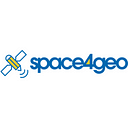EIT RawMaterials: driving innovation, education and entrepreneurship in the Raw Material Sector
1) What is your organization about?
EIT RawMaterials is the largest and strongest consortium in the raw materials sector worldwide. Our vision is to develop raw materials into a major strength for Europe. To achieve this aim, EIT RawMaterials unites more than 120 partners from industry, universities and research institutions from more than 20 EU countries, active across the entire raw materials value chain: from exploration, mining and mineral processing to substitution, recycling and circular economy.
One of EIT RawMaterials’ major lines of activity is Education. Our activities across the entire ecosystem of learners — PhD students, Masters’ students, professionals of the sector, industrial partners, and wider society — foster new ways of learning and teaching by connecting academia, industry and research organisations.
Our education activities aim to:
· Introduce the whole society to the importance and relevance of raw materials and incite interest in topics related to raw materials;
· Train current and future stakeholders to the technical standards required by the raw materials industry today — contextually across the entire raw materials value chain;
· Foster the entrepreneurial and innovation skills, knowledge and attitudes needed for the entre- and intrapreneurs of tomorrow.
2) You manage a project called RawMatCop: what is it?
RawMaterials Copernicus Programme (RawMatCop) is a four year action co-funded by the European Commission’s DG DEFI (Defence Industry and Space) Copernicus Unit and EIT RawMaterials. The RawMatCop programme demonstrates, disseminates, educates and develops new skills and applications of Copernicus and Earth Observation data through funding of post-doctoral and placement research projects as well as the delivery of targeted training to sectoral actors.
RawMatCop researchers work closely with end-users such as industry and public authorities to develop solutions using Copernicus data for major challenges faced by actors in the raw materials sector. The knowledge and findings generated in these case studies are then transformed into a hands-on training for professionals in the raw materials sector: the RawMatCop Academy. The Academy provides a practical introductory training to illustrate how Copernicus can make primary and secondary raw materials industries more cost-effective, safer and compliant with environmental legislation.
3) Why are EO skills so important for your sector?
Copernicus data and services can be game-changing in the raw materials sector. For example, in exploration activities, EO is a cost-effective solution to allow future exploration to focus on the more remote deposit locations, which we must access to meet the increasing demand for raw materials in modern societies.
While satellite data has been used in some relevant applications in the raw materials sector, the constant improvements and increasing cost-effectiveness of EO data present scope for significant further development and new applications. Training and skills development are essential, in order to improve the technical capacity in the raw materials community and enable the successful integration of EO data and services in the sector.
4) Why was it important for your organisation to join EO4GEO?
At EIT RawMaterials we aim equip students, young researchers and idea-holders with the necessary skills to become the innovators, entre and intrapreneurs of the future, strengthening Europe’s position as a global leader in innovation in the raw materials sector. The development of Earth Observation skills in the raw materials community is one of the goals of the RawMatCop programme, and we look forward to learning from EO4GEO consortium experiences and best practices in other sectors. Similarly, we hope to bring to EO4GEO insights about the current and future skills which the European raw materials sector will demand in order to remain competitive and also support the transition to a green and circular economic model.
